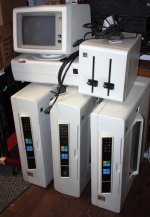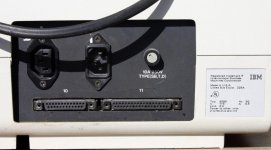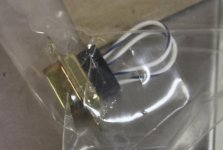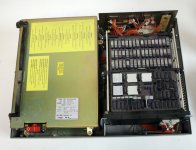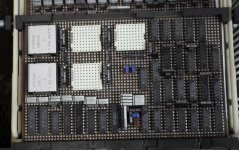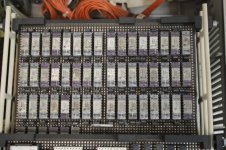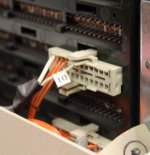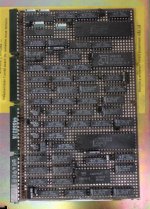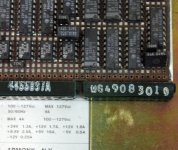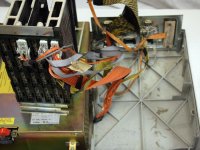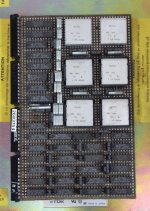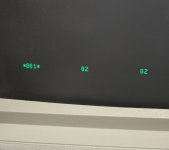My code was accepted into next MAME release (0.182 -- should happen later this month).
Teledisk and Imagedisk floppy images (single-density ones) are usable with MAME; of those on Bitsavers, C.E. diags and CP/M boot but aren't stable. POST (aka BAT) errors can be skipped with Memory Record button (mapped to SysRq). Product Support Manual is a must read in any case
There's still a lot to figure out and emulate, of course:
- verify all frequency sources, document ROM revisions
- memory size options
- bus errors, interrupts
- 92-key keyboard variant, keyboard click/beep, keyboard layouts
- 25-line video board (instant scroll, sub/superscripts, graphics mode)
- 66-line video board
- either emulate floppy board, or complete its HLE (drive select, etc.)
- double density floppies; "memory record" (system dump) generation to floppies
- pass BAT with no errors (Basic Assurance Test)
- pass RNA with no errors (Resident Non-Automatic Test)
- pass PDD with no errors (Problem Determination Disk)
- pass CED with no errors (Customer Engineering Diagnostics)
Teledisk and Imagedisk floppy images (single-density ones) are usable with MAME; of those on Bitsavers, C.E. diags and CP/M boot but aren't stable. POST (aka BAT) errors can be skipped with Memory Record button (mapped to SysRq). Product Support Manual is a must read in any case
There's still a lot to figure out and emulate, of course:
- verify all frequency sources, document ROM revisions
- memory size options
- bus errors, interrupts
- 92-key keyboard variant, keyboard click/beep, keyboard layouts
- 25-line video board (instant scroll, sub/superscripts, graphics mode)
- 66-line video board
- either emulate floppy board, or complete its HLE (drive select, etc.)
- double density floppies; "memory record" (system dump) generation to floppies
- pass BAT with no errors (Basic Assurance Test)
- pass RNA with no errors (Resident Non-Automatic Test)
- pass PDD with no errors (Problem Determination Disk)
- pass CED with no errors (Customer Engineering Diagnostics)

